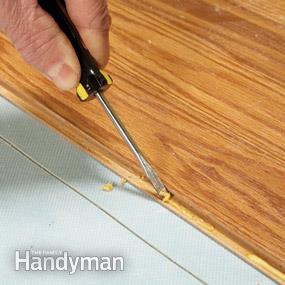This flooring product is constructed by layering a sheet of thin decorative material over a synthetic base or particleboard. The reason that the flooring company uses a decorative material is to make the laminate flooring look like tile, wood, or stone. The decorative material will then be covered with a sealant coating to keep the flooring from breaking down. Normally laminate flooring is resistant to water damage. If there is a large amount of moisture it can, overtime, destroy your floor.
Because laminate flooring is constructed using several sections locked together it is usually easy to repair this water damage yourself. And no, you will not have to take up the entire flooring. You should first dry the area that is wet so there is no water left on the floor. Then you will be able to remove the parts of the floor that have been damaged. Before you put down new laminate flooring you will need to make sure that sub floor is dry.
Many times when it is the kitchen floor that becomes flooded it is due a leak from the refrigerator, dishwasher, or in the utility room it could be due to a leaky washing machine but any standing water could cause damage. Once you have figured out what is causing the leak and fixed it, you should make sure that your laminate flooring has been completely dried. You can do this by using a wet-dry vacuum or mopping the water up. Which method you use depends on how much water was on the floor. After all the excess water has been dried up you should put a fan on the floor to help dry out the floor underneath.
To repair water damage to laminate flooring you will need either a crowbar or circular saw to remove the section that has been water damaged. To start pulling away the damaged pieces without ruining the surrounding floor you need to start out using a chisel and hammer. Once you have the damaged section start to come up you need to remover the tongue part of the damaged flooring with a knife. Once the laminate flooring has been removed put a fan at the edge of the opening so you can dry the sub floor before you put in the new flooring. If it is not dried then mold can grow below your flooring on into the future. To replace damaged laminate flooring you can use nails or construction glue. When you use nails to put in the first piece make sure that it fits secure to help ensure that the rest of pieces fit securely.




